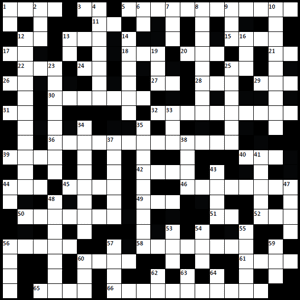What is the meaning of this? Updated ISO glossary launched on website
 Just for fun, we made a crossword puzzle with ISO terms!
Just for fun, we made a crossword puzzle with ISO terms!
An overlapping mission for the ISO’s Corporate Communications and Customer Training departments is to describe in plain English what the ISO is all about to numerous audiences. Defining ISO jargon as simply as possible is an essential part of this work. “Real-time locational adjusted-net-interchange deviation” anyone?
We developed the ISO glossary over a decade ago as our go-to source for short and sweet definitions of industry terms appearing in ISO materials. The feature is presented on the ISO website for use by anyone needing to get a handle on a term. Because many terms have morphed or emerged through the years, it was time for an update.
|
Do you know your ISO? Just for fun, here’s an ISO-focused crossword puzzle. Use words, acronyms, abbreviations, and a little imagination to complete this puzzle mostly about ISO New England. It’s open book, so by all means, search the new glossary (use Control F). Answers will be posted in the coming weeks. |
The update project
Through an interdepartmental collaboration, the ISO developed a new platform for managing and maintaining the glossary. “The platform provides the flexibility for keeping the glossary up to date and functional,” says Jen St. Onge, senior instructional designer. “With the new database, Corporate Communications can easily enter a new term or revise an existing one, and Customer Training can more quickly generate lists of terms to include in training materials.”
The glossary remains inclusive,” says Carol Wendel, senior technical editor. “For example, it defines the North American Electric Reliability Corporation term, bulk electric system, the Northeast Power Coordinating Council term, bulk power system, and the often-used derivations of these terms. It also includes terms that have the same acronym, like CT and LMP.” Because older terms may still need to be explained from time to time, and because archived reports can be accessed, the glossary has retained the definitions for expired programs, prior market features, and defunct systems, for example.
How we drum up these definitions
To attain absolute accuracy, plain English, and brevity, we first look up a term’s definition in our tariff, relevant manual, or other reliable source if available. As applicable, we’ll dissect the existing explanation into its various pieces (e.g., clauses; phrases; parts i, ii, iii) and make sure we understand each piece, asking subject matter experts for clarification. We’ll then construct the new definition, run it by the subject expert, and rehash it until it’s as clear and concise as possible.
Access to the glossary
The glossary is available at the ISO’s website under the “Participate” then “Support” menus. Note that the page also includes links to the official documents that include the full-length legal definitions for many terms.
- Categories
- Inside ISO New England
